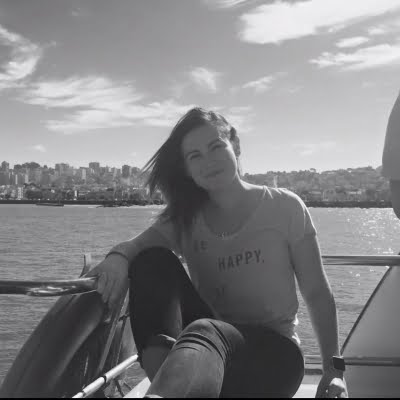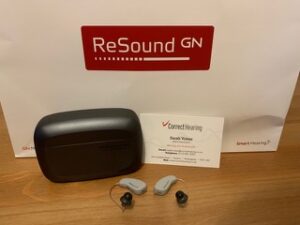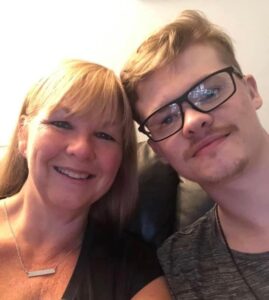Taking a photo to me is not just a picture, its capturing a moment, capturing sight I no longer have.
I take a picture and then take it apart to put it back together in my mind. I zoom in, mentally analyse and take in each little part, put it together like a jigsaw puzzle and make a full picture.
Slowly but surely I use my tiny amount of vision to form a mental picture that I can reproduce in art.
Whilst registered blind (legally blind in US) I do have 5 degrees of vision left in my right eye.
I believe that being born deaf is why I’m a visual person, with such visual strategies, even though I’m now deafblind.
Lipreading is all a part of hearing with your eyes when you are deaf but now deafblind I really struggle with lipreading so I’m now sort of transitioning to other coping strategies
I now try to look at eyes as opposed to lips as I would automatically start trying to lipread which is very tiring to deaf people but absolutely exhausting with damaged eyes like mine.
The small window of vision I have can be pretty useless, however I have found using my iPhone camera to take a photo of something like a menu or label makes that tiny print all of a sudden accessible. Sounds funny right? Using my iPhone to take a picture means I can use my fingers in a pinch motion to zoom in and move the screen around to view what I originally couldn’t see, simple, unfortunately it doesn’t always work.
Depending on the quality of picture or if its a picture of something moving the quality isn’t always good enough to make sense of.
I have taken a fair few videos of Unis when out on a ‘free-run’ and I often like to as a hobby edit and slow them down. I also learnt that whilst viewing a video on my iPhone 6 I can zoom in. Quality isn’t always great on this if I have since edited the picture, but it’s enabling me to get a little closer to Unis’s flapping ears in the wind, or her wagging tail. I experience that moment slightly differently.
I take a lot of photos. Yes I take a fair few selfies too! (cringe, I know!).
I store all of these and go over them regularly. I zoom in, I view them on my Mac, I might edit them a few times over and each time I see something different and very strangely I notice small differences even though I’m blind!
Being someone who’s creative and often liked to fiddle with colours and doodles, I guess this is fairly natural.
I also see the benefit of this with my condition.
I attend lots of events, I nearly always take pictures if I can. I always take more pictures than I need to. When I am taking pictures I only have to focus on one thing. Thats my phone screen, and the section with the camera ‘button’ (obviously iPhones being touch screen, it’s not a literal button).
I feel less stressed focusing on the one screen and taking photos. Whilst I experience the whole atmosphere on a holiday, or at an event. I am also simultaneously capturing it. I love taking panoramic pictures too.
Later I will zoom in, review, delete and edit.
Taking a picture and zooming in is almost the way I see a person’s face now.
When I look at someone’s face I now only see one eye and maybe an eyebrow, the rest is a blur on a good day I might have the occasional blind spots too.
In order to view a whole face I move my eyes around to scan to the other eye/ eyebrow, above to the hairline, down the nose to the lips and all around to capture the hair, quite exhausting typing it, but thats the process I go through to see now and yes, it’s exhausting. Once I’ve scanned once or twice that face is memorised in my mind. I will have remembered certain features, not always all, depending on lighting and positioning.
However, if I was to take a picture of a face using my iPhone, I zoom in, split the picture, and view the eyes, the eyebrows, the nose, etc and piece it all together.
During my A Levels, I painted a fair few portraits to try and interpret how I view a face. My main pictorial outcome for people to understand in an abstract sense was a jigsaw puzzle. I see a face, but just the one piece at a time. In my mind I am piecing together the jigsaw puzzle of someone’s face.
Taking a picture allows this. Photo’s allow me to interpret what my eyes alone cannot.
Being on holiday, amongst the smells, various textures, tastes and aural surroundings the pictures help me complete the experience at the end of the day/ holiday.
A selfie helps me complete my make up!
A recent experience was San Fran, more of this in another blog:
San Francisco was amazing. I fell in love with the city and all coping strategies kicked in and along with Mum and Sister I was able to quickly adapt.
The people were friendly and once again I was looked after using my cane wherever I went. The weather was beautiful. We went on a tour bus and ventured around to ‘see’ as much of SF as possible. I felt happiest I had been in a long time. I took full advantage of my camera on my iPhone.
I have always been creative and photography was not always a strong suit of mine, taking photos has always been a strategy for me to zoom up close after taking a picture.
Thanks to my iPhone I actually did see the Golden Gate bridge, all 1.5 miles of it via pictures and zoom.
I take a fair few panorama pictures, at first I wasn’t sure why accept I liked them and what they allowed me to see when I zoom in.
It only occurred to me recently that taking a panoramic picture which involves standing and viewing one view and gradually rotating around creating a long stretch of a view in one. Well, with my restricted field vision, this is very beneficial.
My lack of peripheral vision means I cannot take in one landscape at once, using my fingers to pinch in and out of a landscape (like I do with any picture,) means I am breaking up the image to fit into my small 5 degrees and moving about gradually to fully view an image.
Panoramic artistically create a long view, two perspectives in one. For the detail I zoom in to fully appreciate it, I almost feel like I have peripheral vision again.
Two perspectives on one screen create more of a memory for me of these amazing experiences.
Pictures mean a lot to me.
Pictures capture more than a moment, they become treasured memories that Usher Syndrome cannot take away.
Read 25103 times


